Thursday was Epiphany, so the school was closed and we decided to take a tour of the Chianti region and Siena. Chianti is the name of the hilly regions south of Florence; it is best known for its wine but also produces some of the best olive oil in the world. The gently-sloped hills are all shades of green, covered in mist, and scored with vineyards and olive orchards.
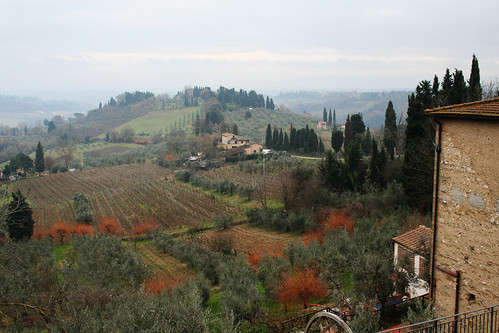
Our first stop was a tiny town called San Gimignano. It is perched on the top of a little hill, overlooking the rolling landscape, surrounded by olive trees and pines.
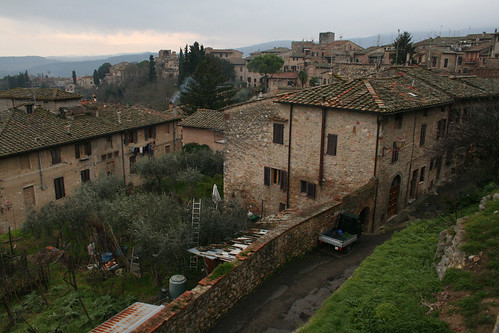
It is deliciously medieval.
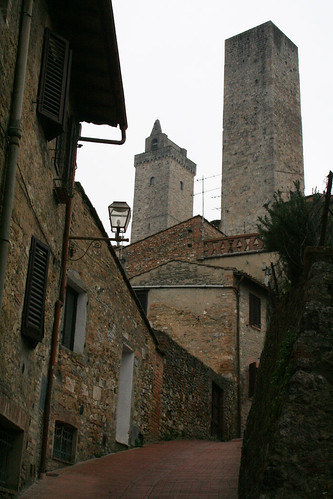
Really, it's the kind of place where seeing a car or even a person in modern clothing seems an anacrhonism.
The history of San Gimignano and the Chianti region is tied to the ancient rivalry between Florence and Siena, and was shaped by the effects of the Black Death. The ruling powers of both cities wanted the land between them (and each other) for their own, not only for control of wine and oil production, but for control of the roads and the ability to tax the goods that were transported there. Florence eventually won, and Siena was subsequently crippled by the Plague; thus, it was Florence that had the greater political and financial power, and Florence that gave birth to the Renaissance, while Siena did not experience the same population growth or architectural evolution. Thus, Siena and many of the small towns in the Chianti region (such as, for example, San Gimignano) have retained this medieval character and tend to have very small populations.
In the piazza by the town's cathedral, surrounded by fourteen ancient towers, there is an open-air market of clothing, gifts, and fresh food.
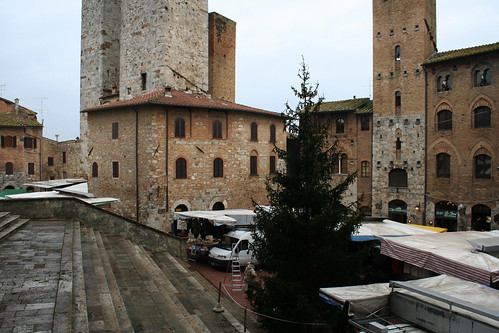
San Gimignano's town hall shows some of the earliest examples of perspective in frescoes. The three-dimensionality is striking in person—the images pop out at the viewer and really have an astonishing sense of depth.
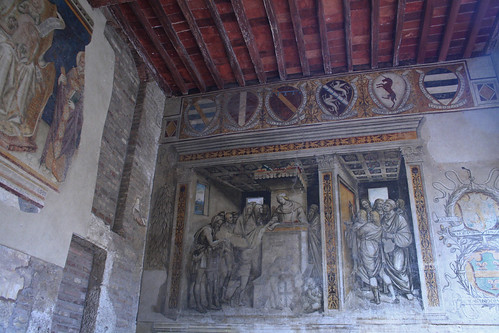
We had about an hour to wander San Gimignano; my friends and I stopped for coffee, bought some postcards and souvenirs, and mostly wandered the stone streets gaping in awe. When our time was up, we piled back onto our tour bus and were on our way to Siena.
Now, as you may remember, I had a misadventure in Siena during my first few days in Italy, so I was really looking forward to the chance to experience it properly. I also have been secretly, deeply in love with Siena since I was very young, and I will tell you why in my next post!
For now, here is a preview:
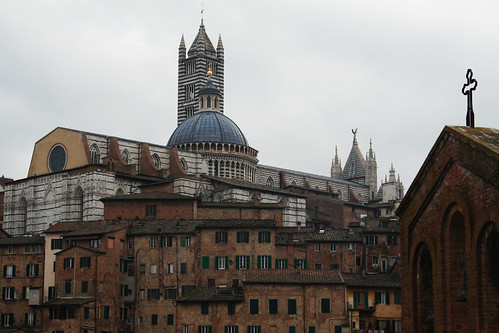
Until next time! Ciaociao!

Tracy,
ReplyDeleteI believe in the future when I think back on the time you were in Italy I will be convinced that I was there with you. You bring everything alive with your photos and descriptions. What a wonderful gift. Thank you!
love,
Dad